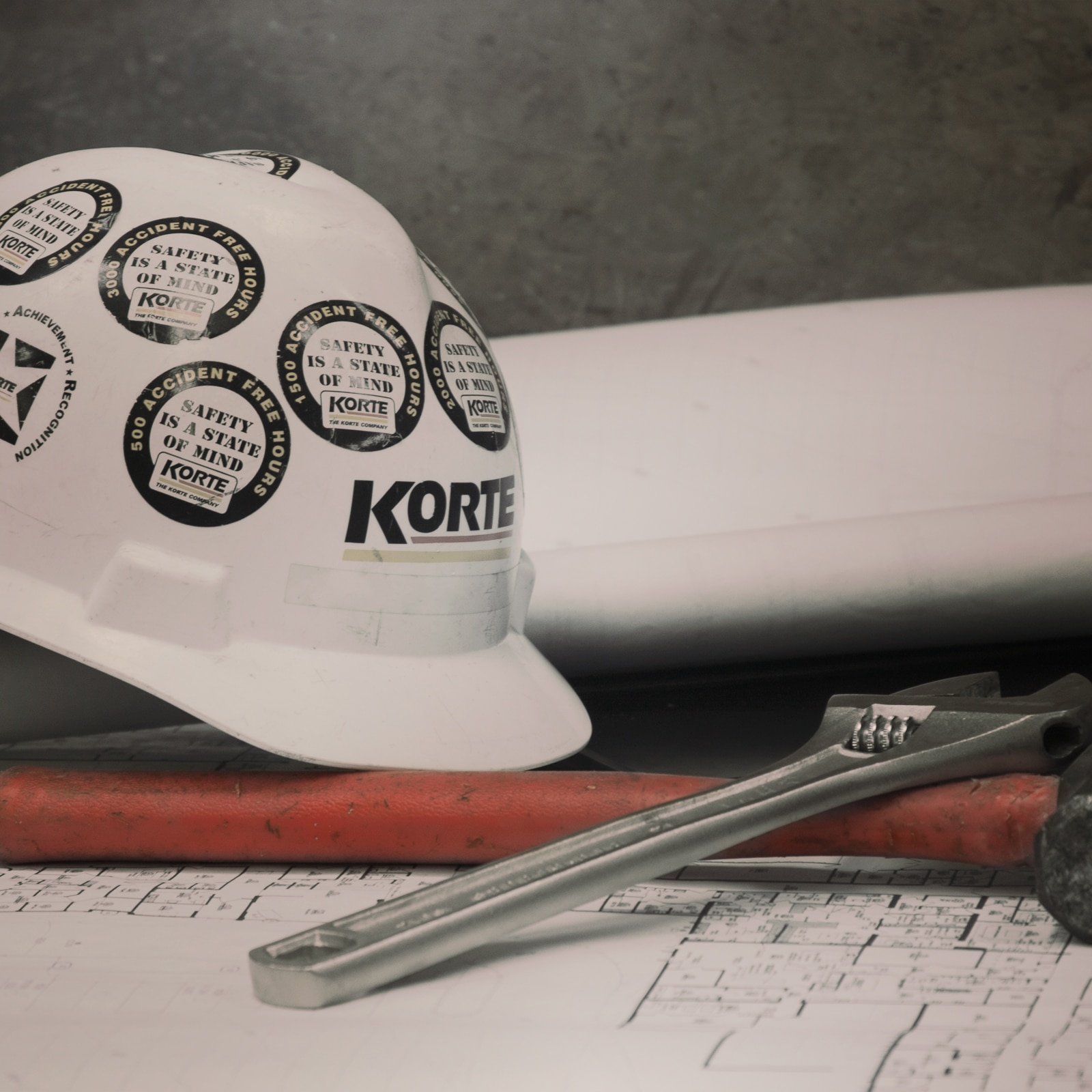The past couple years tested the limitations of medical facilities throughout the nation as extreme circumstances became business as usual.
As healthcare builders, we help our customers fully prepare to care for their communities during unavoidable events like disease outbreaks and natural disasters.
What were once considered unlikely hypotheticals at the back of dusty disaster response plans are now the issues keeping healthcare leaders up at night. Things like:
- How can we create more flexible emergency departments to handle a rapid influx of contagious patients?
- How can we protect our nurses and other staff members while providing the best treatment possible?
- How can we rethink outpatient surgical centers to save space and resources in major hospitals?
- How can we take advantage of telehealth services for behavioral health treatment and other practices that can be performed remotely?
The medical industry came together under a common purpose with streamlined digital tools and technological innovations to find the new best practices for the challenges of the pandemic.
Lessons learned during the pandemic will affect the healthcare landscape for years to come. Medical leaders who aren’t proactively planning for the future will find themselves behind the curve.
Crises like the COVID-19 pandemic are inevitable, so we’re working to make sure our builds will help save lives. If your trusted builder isn’t thinking about how to help keep your patients safe, they should be.
Making emergency departments more flexible
Emergency departments felt the brunt of the pressure from the pandemic as contagious patients packed their wards, leaving often under-equipped medical staff to work long hours in difficult conditions.
EDs simply weren’t designed for such an unexpected influx of patients who required isolated environments to prevent the spread of disease. Of course, they can’t stay primed for every future disaster that they may face, but they can become more flexible so that they can readily adapt to the needs of the moment.
Healthcare leaders also can reduce some of the challenges of over-crowded departments by updating their wayfinding systems and patient waiting practices so that crowds don’t form as easily in the first place.
Creating multi-purpose spaces
What if any room in the hospital could readily meet any medical demand?
Rather than moving patients in severe conditions to another room, the room can change around them.
Many hospitals have been focused on adding more single-patient rooms to offer more privacy. These rooms could accommodate multiple patients in an emergency, if properly equipped.
Negative air pressure systems can create ready-made quarantine spaces to help limit the spread of airborne communicable diseases. Negative pressure pulls germs from the ward and into the ventilation system where it’s captured by filters.
But it is difficult to make every room a potential isolation chamber without affecting the rest of the ward. Builders are working to develop pressure systems that pressurize specific rooms, then switch to different rooms the next day.
While adding technology such as ventilators would be a major investment for any hospital system, it could prove to be a priceless commodity in the event of another major outbreak.
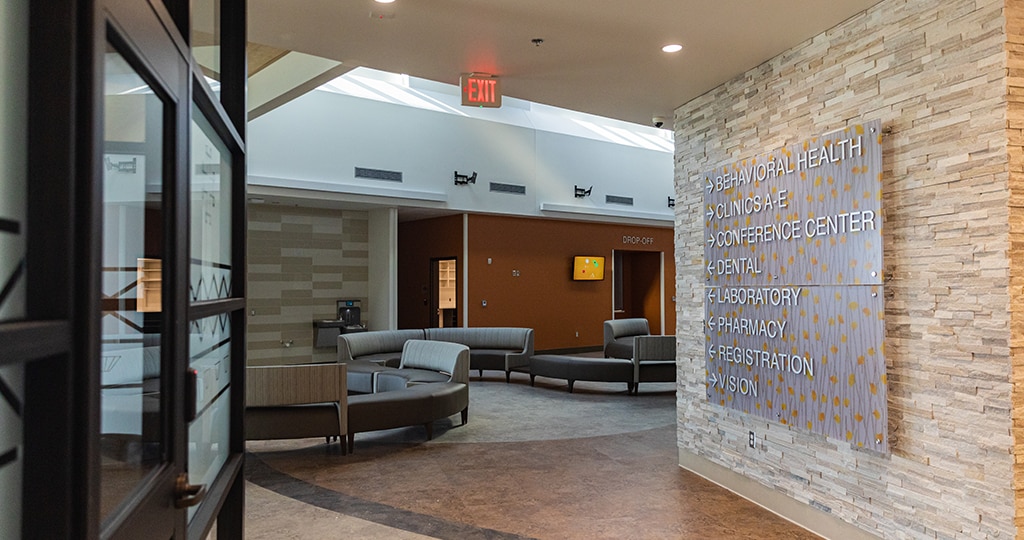
Improved wayfinding to prevent crowding
As the front door to most any hospital, emergency rooms are a bottleneck — and it’s the worst place for that to happen in the event of a disease outbreak. That’s why wayfinding for it and other departments should begin before patients even enter the driveway.
Large hospitals can be rearranged with multiple access points with distinct routes for patients based on the treatment they require.
Hospitals’ complicated layouts can be confusing for anyone, even if you’re not in a potential health crisis. Visitors and patients should see wayfinding indicators like maps, signs and color-coded lines before they enter the grounds. Early and regular wayfinding measures direct people their entire journey through the parking lots, grounds and facilities based on their needs (or in the case of COVID patients, their potentially infectious condition).
Hospital systems could take a lesson from the dining sector by implementing notification systems that allow people to wait in their cars instead of the waiting room, and enter the facility when medical providers are ready to see them.
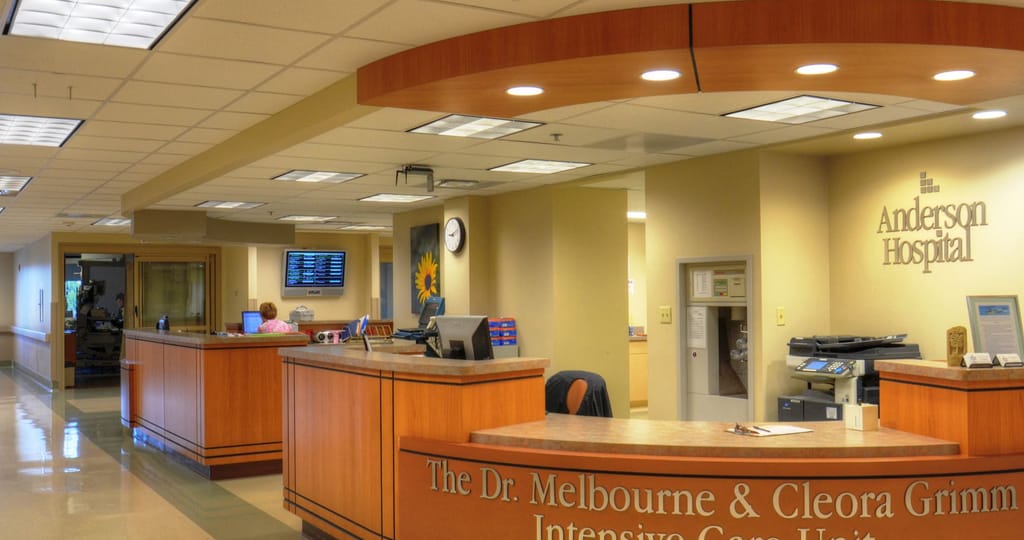
Nursing stations or pods?
Out of all the challenges nurses faced during the pandemic, the lack of workspace and basic supplies topped the list.
Nursing stations, hallways and patient-care spaces only seemed to get smaller with the influx of COVID-19 patients and increased use of disposable protective equipment like gloves, masks and gowns.
Nurses need elbow room, and they shouldn’t have to leave a patient to run down the hall for basic supplies. Yet many were forced to work in overcrowded COVID wards, wearing the same PPE as with the last patient because they couldn’t get replacements. Basic maintenance logistics also were severely tested as old PPE piled up and support personnel struggled to clean things up without getting in the way or putting themselves at risk of infection.
These challenges have motivated healthcare leaders to revitalize the years-old debate over centralized nursing stations and decentralized nursing pods.
Nurses often support one another in their duties, so isolating nurses from one another can reduce teamwork. But it’s also the simplest way to prevent spreading contagions and ensure patients throughout the wards can count on similar response times.
Nursing pods offer each nurse more personal space to operate. Each station can have a dedicated PPE storage space to better maintain supplies. Unfortunately, smaller storage spaces also mean support staff members have to travel further to re-equip the pods.
The Korte Company recently discussed these issues with a client and took an in-depth look at nurse staffing patterns on the day and night shifts. We quickly learned that the amount of support staff heavily dictated supply availability. During night shifts with fewer support staff, nurses more often had to take the time to obtain their own equipment. And every second nurses spend walking to retrieve new equipment is one not spent treating patients.
Implementing nursing pods also added another task for the support staff: PPE had to be transported to an additional room on the patient unit. But the marginal cost of these increased efforts was more than offset by the improved productivity of nurses who no longer had to travel 200-plus feet to and from a storage room simply to find a draw sheet.
This strategy improved nightly patient morale, and day shift aides also were happy for shorter trips.
This means that nursing pods are likely the best option during the day shift, but if your facility doesn’t have enough support staff capabilities during the night shift, it could be best to transition back to the centralized station model.
Seek nurse (end user) insights
In our experience, floor nurses provide the best insight and ideas for how the built environment can help them deliver the best care possible.
The Korte Company always emphasizes stakeholder input when we build, renovate or expand healthcare facilities. If you want to build committees or working groups within your staff to help address these and other challenges, we can help organize the sessions and work towards the best and most cost-effective solutions for your facility.
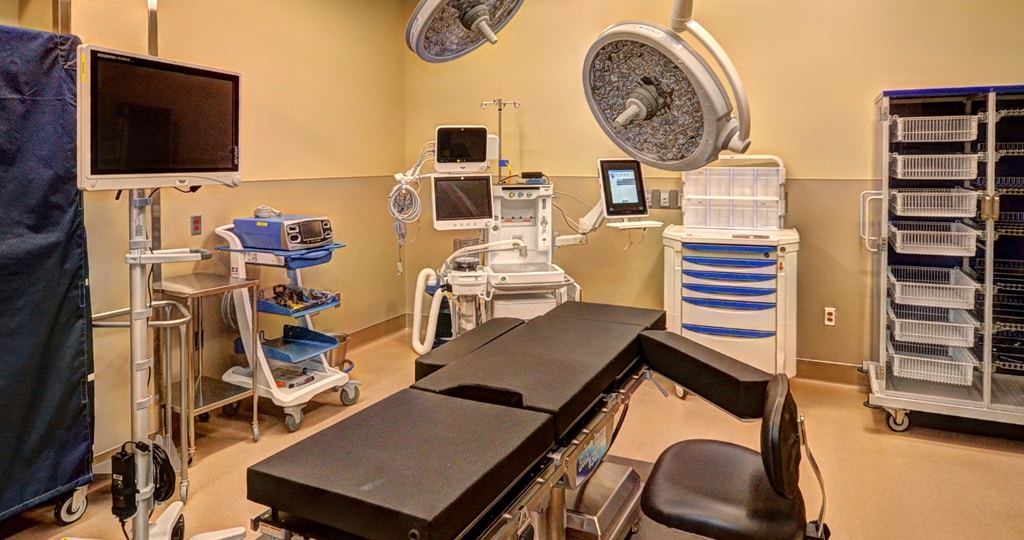
Surgical centers take pressure off hospitals
Ambulatory surgical centers (ASCs) and other decentralized healthcare facilities are considered a less expensive option for builders, medical providers and patients alike. But, the pandemic placed a whole new demand on the facilities.
Hospitals shut down all but emergency surgeries after the pandemic began. Fortunately, patients still underwent simple surgical procedures at ASCs, avoiding major hospitals filled with COVID patients. This allowed inpatient hospitals to focus on combating COVID-19 during peak periods.
Today, the vast majority of surgeries do not require overnight hospital stays for otherwise healthy patients.
Reimbursement models began to favor outpatient ambulatory surgery more than 20 years ago. A strong partnership with an experienced healthcare Design-Build firm can allow both hospitals and ambulatory surgery centers to explore their options under a variety of reimbursement scenarios to find the best outcomes for both segments of a healthcare system.
ASCs don’t have to invest in on-call services, industrial kitchens or inpatient lodging. Their small size makes them far cheaper projects than major hospitals. They can fit into highly visible areas or move outside of central areas, where real estate is more affordable. They also don’t need all of the specialized equipment and staff necessary at a major hospital.
The cheaper the construction cost, and the faster construction can be completed, the faster an ASC can take advantage of today’s fertile market and make a return on its investment.
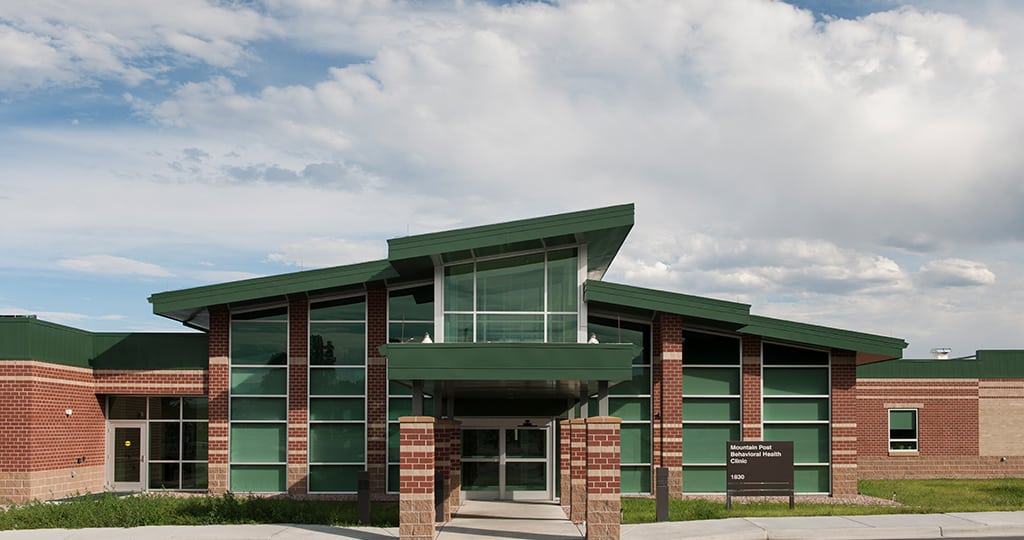
Telehealth fosters behavioral health treatment
The importance of quality behavioral health was sent to new heights during lockdowns, but many treatments were put on hold, leaving telehealth as the only viable alternative. And the gains are likely here to stay.
Before the pandemic, the sector was in the midst of a minor renaissance, with services integrating into wider healthcare systems and specialized clinics becoming more visible in their communities.
Industry professionals want to remove the stigma from behavioral health treatment. These healthcare leaders promote the integration of behavioral health facilities with other outpatient clinic campuses and major hospital systems. Placing behavioral health facilities alongside other clinics is hoped to help normalize treatment. It also makes it easier to transition other patients to the proper facilities in the case of a behavioral health emergency.
The pandemic delayed many behavioral health facility improvements, such as modernizing and beautifying patient spaces. But while those efforts were put on hold, more patients were able to see behavioral health professionals from home than the new facilities would allow, especially with social distancing.
What has COVID taught your team? Let’s talk
The pandemic has changed the way the entire healthcare industry thinks about building smart. Every sector, from surgical centers to behavioral health clinics, is rethinking the way they do business.
Let’s talk about how we can leverage lessons learned and find innovative solutions that bolster patient care, come what may.
